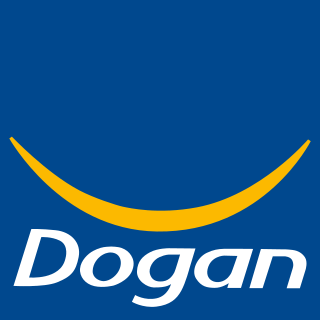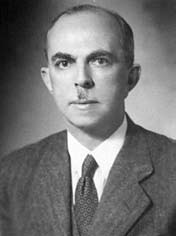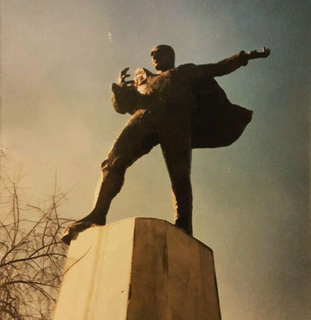
The Turkish Riviera, also known popularly as the Turquoise Coast, is an area of southwest Turkey encompassing the provinces of Antalya and Muğla, and to a lesser extent Aydın, southern İzmir and western Mersin. The combination of a favorable climate, warm sea, mountainous scenery, fine beaches along more than a 1,000 km (620 mi) of shoreline along the Aegean and Mediterranean waters, and abundant natural and archaeological points of interest makes this stretch of Turkey's coastline a popular national and international tourist destination.

Setenay Özbek is a Turkish-born artist, writer, and documentary filmmaker. Özbek is of Ubykh descent.

Halit Refiğ was a Turkish film director, film producer, screenwriter and writer. He made around sixty films, including feature films, documentaries and TV serials. He is considered to be the pioneer of the National Cinema movement and the initiator of the production of TV serials in Turkey.

Cağ kebabı, also called Yatik Döner, is a horizontally stacked marinated rotating lamb kebab variety, originating in Erzurum Province, Turkey.

Cevat Şakir Kabaağaçlı was a Cretan Turkish writer of novels, short-stories and essays, as well as a keen ethnographer and travel writer.
Sabahattin Eyüboğlu was a Turkish writer, essayist, translator and film producer.

Azra Erhat was a Turkish author, archaeologist, academician, classical philologist, and translator. A pioneer of Turkish Humanism, Azra Erhat is especially well known for her published works, including many translations into Turkish from the classical literature of Ancient Greece.

Ziya Hurşit Bey was one of the first Grand National Assembly of Turkey deputies. He was executed in 1926 for attempting to assassinate Mustafa Kemal.

Bedri Rahmi Eyüboğlu was a Turkish painter, mosaic-maker, muralist, writer and poet. His art work was inspired by Anatolian village scenes and folk literature, and included traditional handicraft folk patterns.

Doğan Holding is amongst the biggest conglomerates in Turkey operating in the energy, media, industry, trade, insurance and tourism industries. Founded by Aydın Doğan who still is a major shareholder, the company is led by his daughter Begümhan Doğan Faralyalı. Main operating activity of the Holding is to invest in various sectors via associates, to provide all necessary support to its subsidiaries and joint ventures in order to develop their activities.

Hoca Ali Rıza was a Turkish painter and art teacher, known primarily for his Impressionist landscapes and architectural paintings.

Oğuz Tansel was a Turkish poet and folklorist.

İzzettin Çalışlar was an officer of the Ottoman Army and a general of the Turkish Army. He also served as a politician and was a prominent member of the Kemalist movement.
Altınordu İdman Yurdu were a Turkish sports club based in Istanbul, Turkey. Founded in 1909 under the name Progres FC, the football department of the club became champions in the Istanbul Football League in the 1916–17 and 1917–18 seasons. The club colours were red and navy blue.
The 1928–29 season was Galatasaray SK's 25th in existence and the club's 18th consecutive season in the Istanbul Football League.

Halit Mecit Kıvanç was a Turkish television and radio presenter, humorist, sports journalist and writer. He was best known as a sports commentator.
İsmet Kür was a Turkish educator, journalist, columnist and writer of mainly children's literature. Her writings included children's stories, novels, memoirs, short story, poems, and non-fiction. As a journalist, she worked at the BBC World Service, Cumhuriyet, Barış, and Yeni İstanbul. She also provided programming at Ankara Radio, TRT, and Bayrak.
The Turkish High Sculptors Society was founded on 22 April 1948.

Doğan Hızlan, is a Turkish author.

The Uşak Atatürk Monument is a caped Atatürk Sculpture in Uşak, Turkey by Gürdal Duyar that was inaugurated in 1965. The sculpture was one of 8 Atatürk monuments erected after winning a competition initiated by a campaign of the Milliyet newspaper. It is one of the best-known early examples of Gürdal Duyars' style of modern figurative sculpture, and is one of Turkeys first modern figurative Atatürk monuments. It was originally created for its initial location on a high plinth in a park called government square in front of the governors building, but has since been moved to a new location onto a new-lower plinth near the Uşak railway station.
















